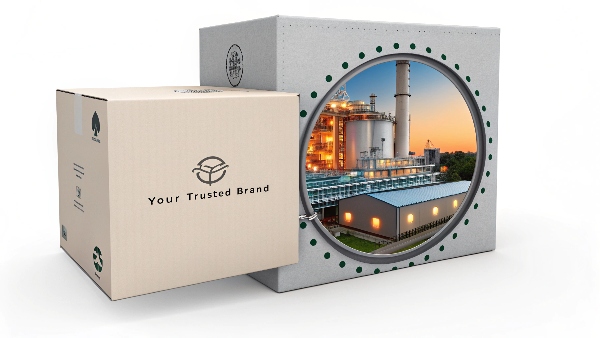You see famous brand names and assume the most expensive one offers the best protection. This can lead you to overpay for features you don't need or under-protect critical assets.
The "best" UPS brand is not a single name. It is the company that provides the right technology, certifications, and manufacturing partnership for your specific application, whether it's a data center or a small office.

Transition Paragraph:
I've spent 10 years at Daopulse, and I've seen the industry from the inside. Many clients are surprised when I tell them that there are many, many UPS brands, and the name on the box often isn't the company that built the machine. Many well-known brands rely on specialized OEM/ODM partners like us to design and manufacture their products. Understanding this single fact is the key to making a much smarter procurement decision. It changes how you should evaluate your options and helps you look beyond the marketing.
Which is the best brand in UPS?
You need to select a UPS, and the pressure is on to choose the "best." Picking the most famous name seems like the safest bet, but is it the smartest one for your budget and needs?
There is no single "best" brand for every situation. The best brand for a hospital's critical life support is different from the best brand for protecting a home office PC. The right choice depends on the application.

Dive deeper Paragraph:
The term "best" depends entirely on your project's requirements. The UPS market is segmented, and different brands focus on different segments. A brand that excels in making small, affordable units for personal computers might not have the certified, high-reliability products needed for a data center. As a procurement manager or system integrator, you need to look past the logo and evaluate the brand based on its suitability for your specific job. Many of the most trusted brands in the world don't actually make their own UPS systems. They come to an OEM/ODM specialist like us with their requirements. We provide the engineering, patented technology, and certified manufacturing. We are the brand behind the brand. When you evaluate a brand, you should be asking questions about the real manufacturer.
How to Evaluate a "Brand"
| Evaluation Criteria | What You Should Ask |
|---|---|
| Target Application | Is this unit designed for critical servers, or just for desktop PCs? |
| Technology Offered | Do they specialize in high-protection Online systems or just basic Standby models? |
| Certifications | Does the product have the necessary CE, RoHS, and ISO certifications for my market? |
| Customization | Can they support specific needs, like lithium batteries or unique voltage requirements? |
| Manufacturing Partner | Who actually builds the product and what is their reputation for quality? |
What's really behind a UPS brand name?
You trust a familiar brand name because you believe it represents a guarantee of quality. But this assumes the brand handles everything from design to production, which is often not the case.
A brand name is a promise of quality and performance. That promise is fulfilled either by the brand's own factories or, more commonly, by a specialized OEM/ODM manufacturing partner who designs and builds the product.

Dive deeper Paragraph:
The relationship between a brand and a manufacturer is key to understanding the UPS industry. There are two main partnership models. The first is OEM (Original Equipment Manufacturer). In this case, a brand designs a product and brings us the specifications. We use our advanced facilities and quality control processes to build that exact product for them. The second, and more collaborative, model is ODM (Original Design Manufacturer). Here, a client like a large systems integrator or retailer comes to us with a need. For example, they need a high-efficiency lithium battery UPS for a new line of green data center products. We then use our own team of engineers and our portfolio of patented technologies to design, test, certify, and manufacture the entire product. The client then sells it under their trusted brand name. For a procurement manager, this knowledge is powerful. It means that the innovation and quality often come directly from the manufacturing partner. Building a relationship with the right ODM can give you access to cutting-edge technology before it's even widely available.
What are the different types of UPS systems brands offer?
You hear terms like "Standby," "Line-interactive," and "Online" from different brands. These technical terms can be confusing, making it hard to compare products and know what you're actually paying for.
Brands offer three main types of UPS systems to target different markets: Standby (Offline) for basic protection, Line-interactive for better performance, and Online (Double-conversion) for ultimate, mission-critical protection.

Dive deeper Paragraph:
The technology inside the UPS is the most important factor, and it's how brands differentiate their product lines. Understanding the three main types is essential for making the right choice. A consumer-focused brand will mostly sell Standby models1. A brand for small businesses will focus on Line-interactive. A brand serving critical industries like healthcare and finance will only offer Online systems2. As an ODM that specializes in high-reliability solutions, we primarily focus on Line-interactive and Online technologies, including both lead-acid and advanced lithium battery options. We help our brand partners select the right technology for their target customers.
Comparing UPS System Types
| Feature | Standby (Offline) | Line-interactive | Online (Double-conversion) |
|---|---|---|---|
| Level of Protection | Basic | Good | Ultimate |
| How it Works | Switches to battery on failure. | Corrects voltage without battery use. | Constantly rebuilds power from the battery. |
| Transfer Time | Small delay (a few milliseconds) | Very short delay | Zero. No transfer time at all. |
| Best Application | Home PCs, non-critical devices. | Small servers, network equipment. | Data centers, hospitals, banking, critical infrastructure. |
Choosing the right type is more important than choosing the right logo.
Conclusion
The best UPS brand is not about a famous logo. It is about finding a partner with the right technology, certifications, and manufacturing excellence to match your specific critical power needs.

